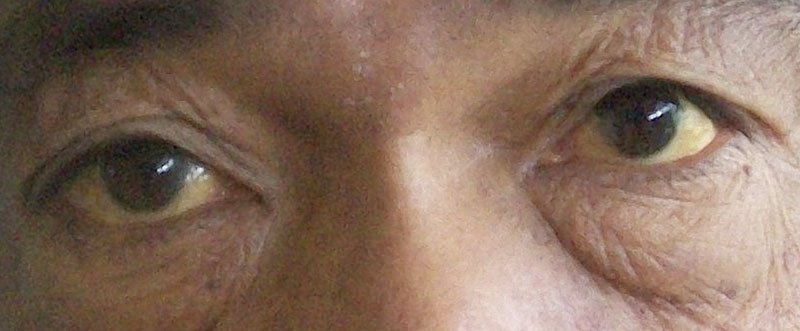If you’ve had the chickenpox virus as a child, you could develop shingles later in life. Shingles can appear anywhere on your body and cause complications, including in your eyes.
Shingles in eye areas can affect vision, along with the other painful and potentially dangerous symptoms that come with the virus. If you have symptoms of shingles, talk to your doctor for treatment options.
What Are Shingles in the Eye?
The varicella-zoster virus causes shingles. In many people, the varicella-zoster virus remains dormant, while in others, it activates later. This virus can appear as shingles, a painful rash, several decades after you first encountered chickenpox.
In 10-20% of people who encounter shingles, the rash appears on or around the eye. When the shingles rash appears in the eye, it becomes herpes zoster ophthalmicus, named for its location. Most of the time, shingles do not appear in the eye, but you can have shingles on the eye and nearby facial areas as well as more common parts of your body, like your back or chest.
While most people recover fully after having shingles, eye shingles do present unique problems. The virus can cause problems like vision loss and scarring. It can also have longer-lasting effects on anyone who has a compromised immune system.
What Causes Shingles in the Eye?
The varicella-zoster virus, the virus that causes chickenpox, lives in the nerves of people who have previously had chickenpox. It becomes herpes zoster ophthalmicus when it reaches the eye, and it can cause severe pain along with the notorious rash that accompanies shingles on other areas of the body.
The shingles virus does not always activate in people who have had chickenpox. When it does, the shingles rash most often appears along the back, ribs, and chest areas. Occasionally, it will show up in other areas, like the face or legs.
According to experts, the resulting weakened immune systems and stress have caused increased shingles cases, tripling them from 2004 to 2016. You cannot predict whether you will have eye shingles since the virus can travel over your body and appear in different areas.
What Are the Symptoms of Shingles in the Eye?
When it comes to eye shingles, there is a difference between shingles appearing in the eye versus around the eye. When you have shingles in your eye, you may see them on your sclera (the white part of the eye).
Shingles in your eye present a higher risk, as it can cause vision problems, including sight loss, even after healing. When the rash appears around your eye, but not in it, doctors refer to it as “eye involvement.”
Regardless of where it appears, symptoms of shingles typically occur only on one side of the body. That means that even if you have a painful rash in or around one eye, the virus will probably not spread to the other side of your face.
Eye shingles can cause the following symptoms:
- Facial tingling
- Red blisters or a rash on the face
- Eyelid swelling and redness
- Eye pain
- Worsening vision
- Watery eye
- Sensitivity to light
You may also experience more generalized shingles symptoms too, including headache, low-grade fever, fatigue, and flu-like symptoms. Shingles typically start as nerve pain, and you will notice the red rash later on the painful areas.
If you initially get shingles elsewhere on your body, they can spread to your face, even after you begin recovering.
What Are the Risk Factors?
You’re more likely to have shingles if you had chickenpox as a child. While you can have shingles symptoms in teenage and young adult years, you are more likely to experience them as an adult over age 50.
If you have a compromised immune system due to factors like age, cancer treatment such as chemotherapy, HIV, or an autoimmune disease, you have a higher chance of getting shingles, including around the eye. Other medications can also weaken your immune system, including corticosteroids and tumor necrosis factor (TNF) drugs.
As evidenced by the increase in cases from 2004 to 2016, stress can increase your chances of getting shingles. Pregnant women and premature infants also have a higher risk.
Shingles in your eye can result in long-term damage to your eye and surrounding areas. That damage can include:
- Postherpetic neuralgia
- Permanent scarring
- Swelling of the retina
- Glaucoma
- Injury to the cornea
- Temporary or permanent vision loss
If you have existing eye conditions like glaucoma, that does not necessarily mean you are more likely to experience the rash in or around that same area.
How Do You Prevent It?
You cannot get shingles without first having had chickenpox. For this reason, you should vaccinate children and adults who have not yet had the varicella-zoster virus.
If you have had chickenpox, you should get the shingles vaccine. While the virus that causes both is the same, the shingles vaccine is more potent and will prevent you from encountering the secondary illness. If you are over age 50, you should get the shingles vaccine.
If you do get shingles, avoid contact with other people, especially if they have never had chickenpox or are pregnant, or have a weakened immune system.
Cover your rash to avoid spreading the virus, and do not touch your eye. While touching different parts of your body after touching the rash will not necessarily spread it, you should take every precaution to keep it contained. Avoid scratching the rash site, and wash your hands when you do have to touch it.
If you already have shingles, you cannot determine where the blisters will appear. Just as touching your eye may not make it spread, it may reach your eye, depending on where it travels along your nerves.
How Do You Diagnose It?
Your doctor can almost always diagnose shingles simply by examining the rash and listening to your symptoms. Because of its unique placement only on one side and its common occurrence, many doctors recognize it on sight.
When you have shingles on your eye, your doctor will examine different parts of your eye and surrounding areas, including:
- Face
- Scalp
- Eyelid
- Cornea
- Lens
- Retina
They will also examine you for shingles on other areas of your body and look for swelling or other problems that often accompany the condition. They may also test your vision to determine the effects of the rash on your eye.
If your doctor does not feel satisfied with a physical exam, they may take a fluid sample from the blisters to test for the shingles virus.
How Do You Treat Shingles in the Eye?
Shingles respond well to antiviral medication, such as acyclovir, famciclovir, and valacyclovir. These medications stop the virus from spreading, help the rash clear more quickly, heal shingles blisters, and control nerve pain from the rash.
For the best results, start the antiviral medication within three days after you notice your symptoms. When treated early, most people recover fully from shingles. During this time, you can also take over-the-counter painkillers like acetaminophen or non-steroidal anti-inflammatory drugs (NSAIDs).
If the rash spreads to your eye, your doctor may give you additional shingles treatments. They may prescribe a steroid medication in the form of eye drops or pills. Treating shingles in your eye requires more careful treatment, as it can cause more severe problems that affect your daily life if neglected.
If you develop postherpetic neuralgia, pain medications or antidepressants prescribed by your doctor can help.
When it comes to home remedies, you may find that a cool bath or shower can help soothe the nerve pain associated with shingles. Additionally, although not everyone experiences itching with shingles the way they do with chickenpox, calamine lotion can help those who do.
Conclusion
The shingles rash can take anywhere from a couple of weeks to a few months to fully heal. However, most of the time, your symptoms will fade eventually.
If the shingles virus reaches your eye, watch for vision changes and other issues that can arise even after you think you are completely recovered. Some people experience continued nerve pain after their rash heals.
If you have pain, vision trouble, or any other lingering symptoms of shingles in the eye, please talk to your doctor about further treatment and other options.





